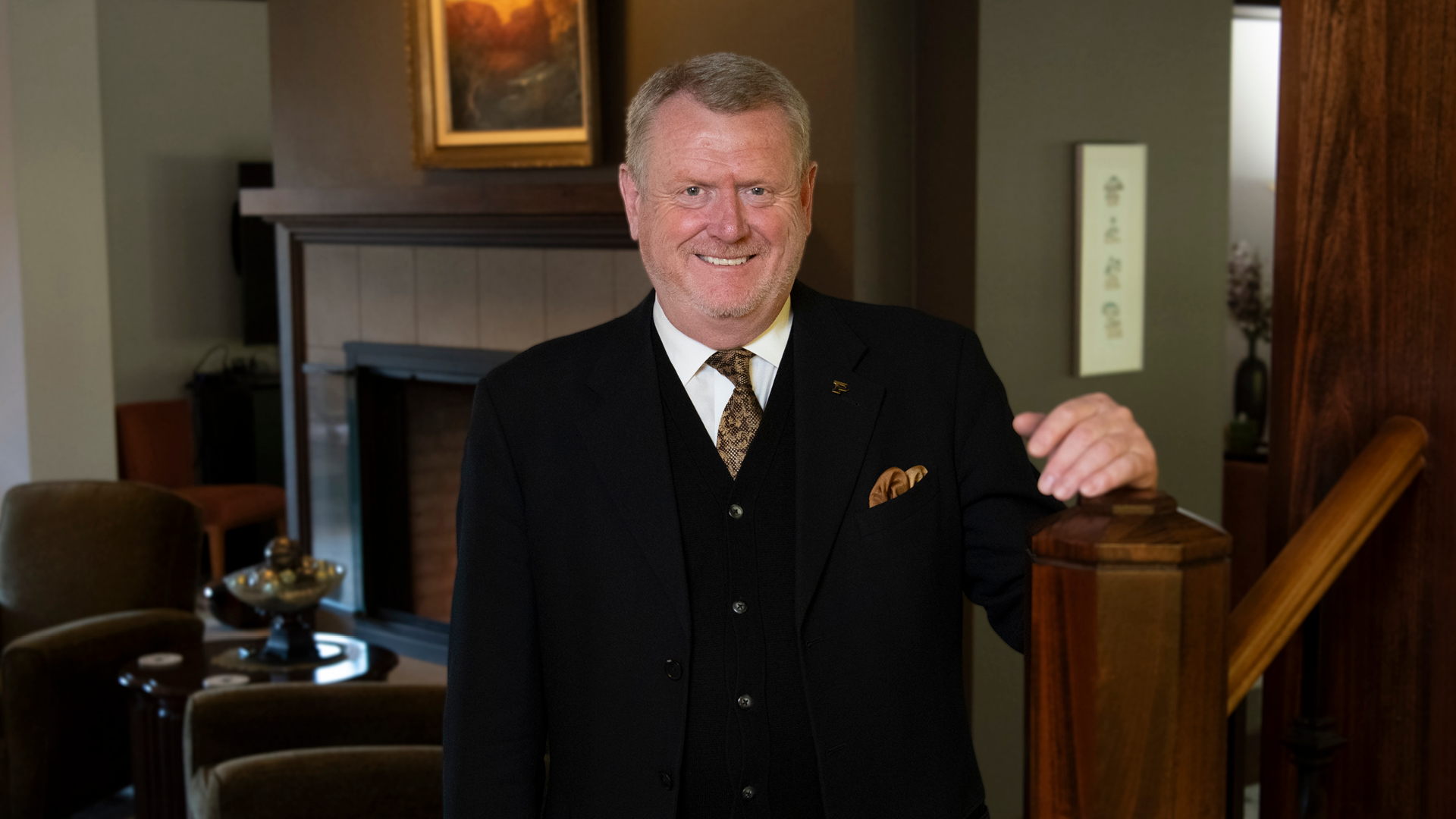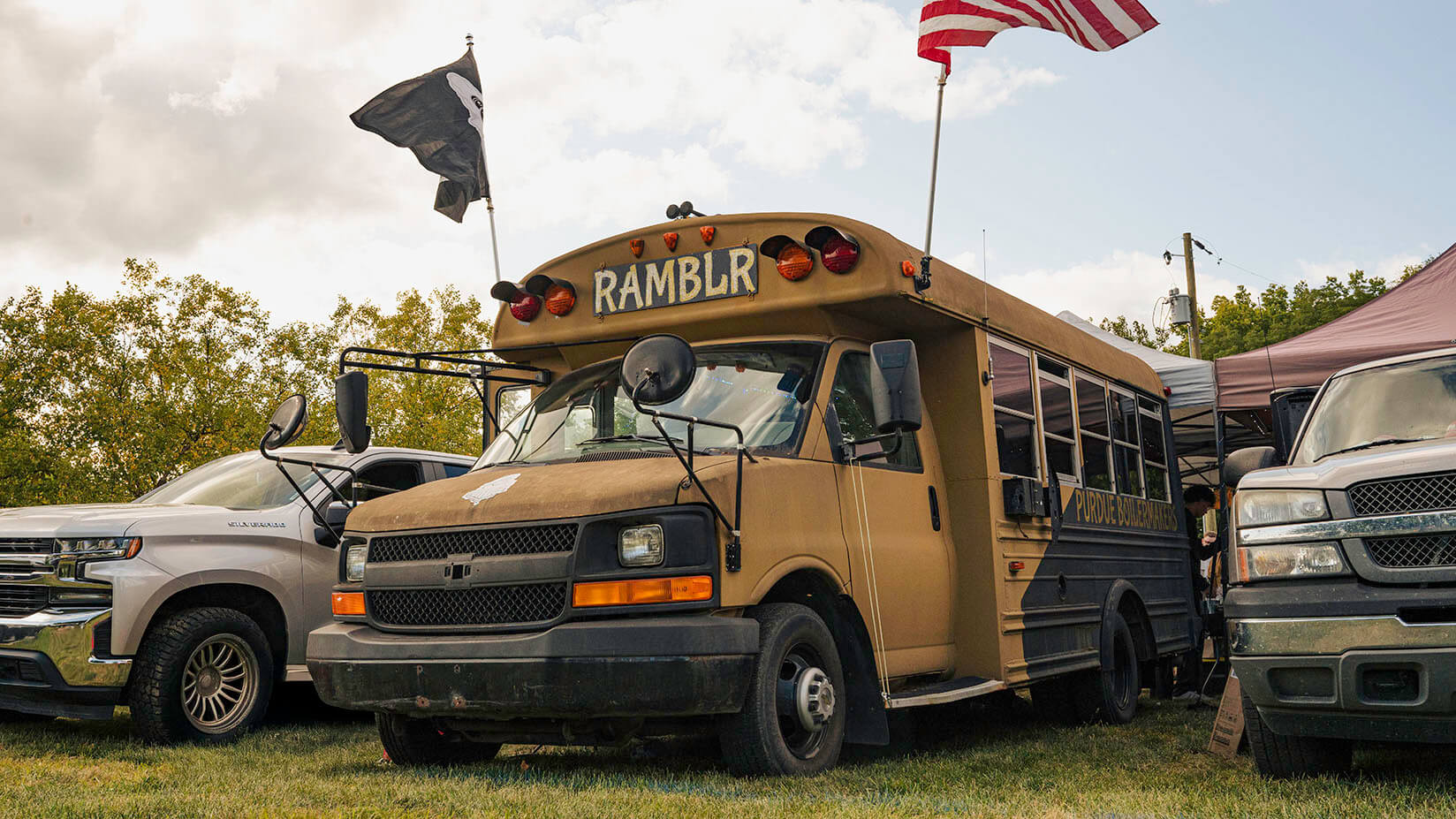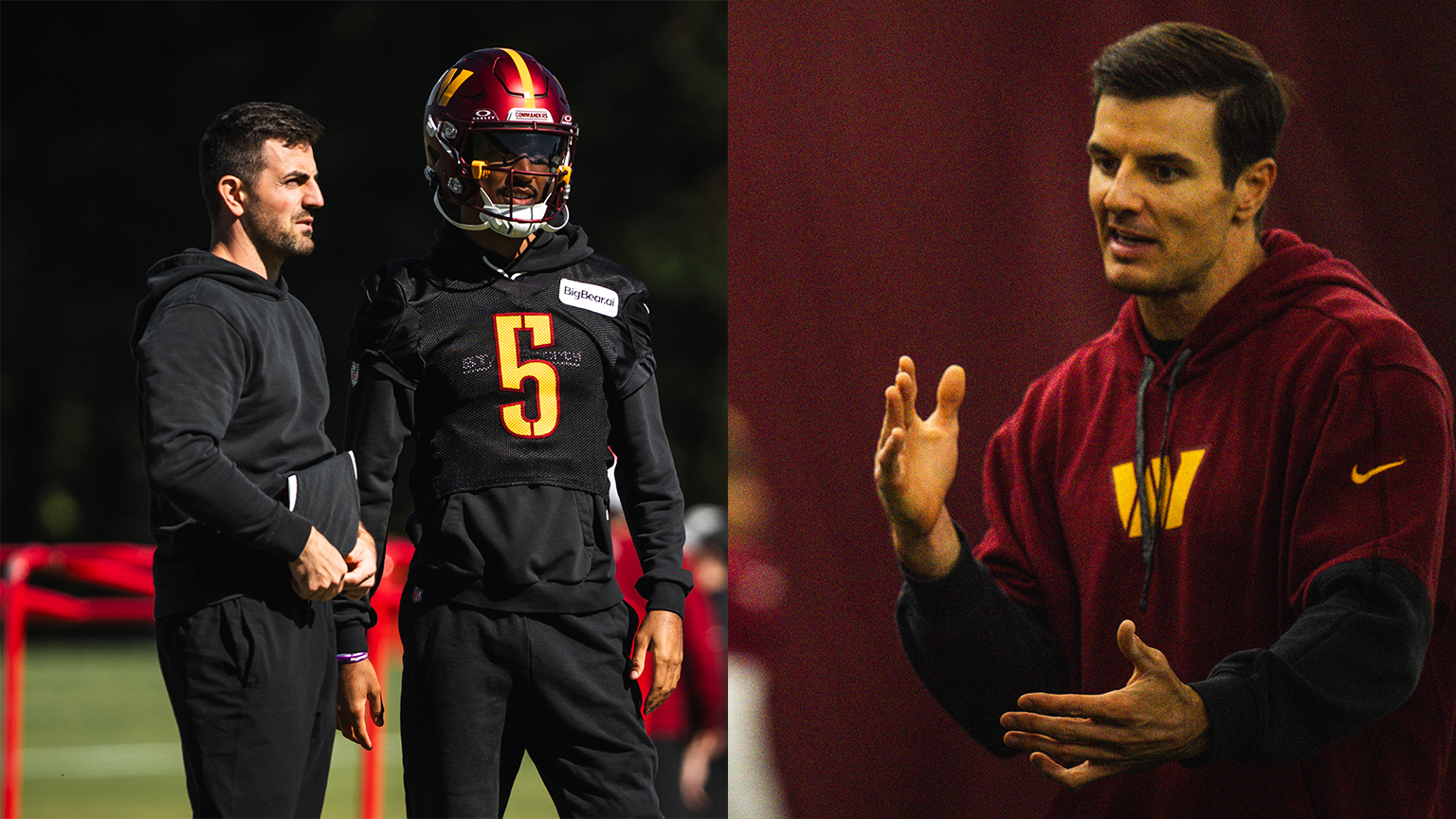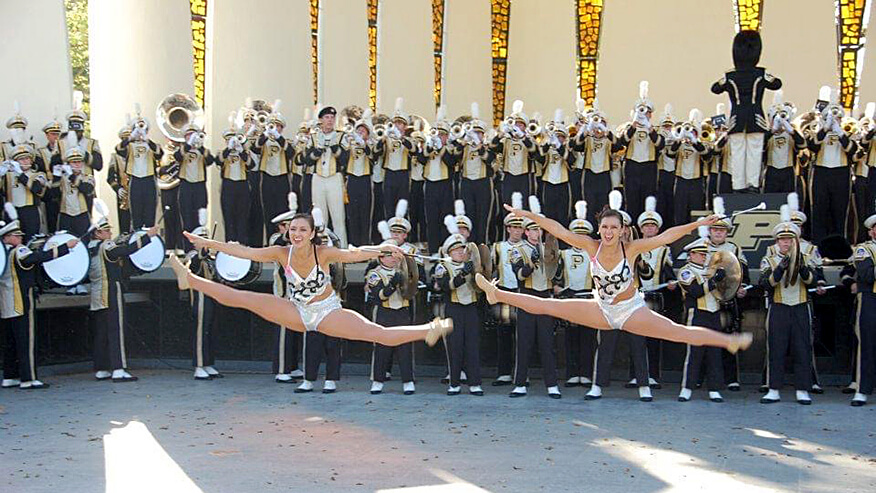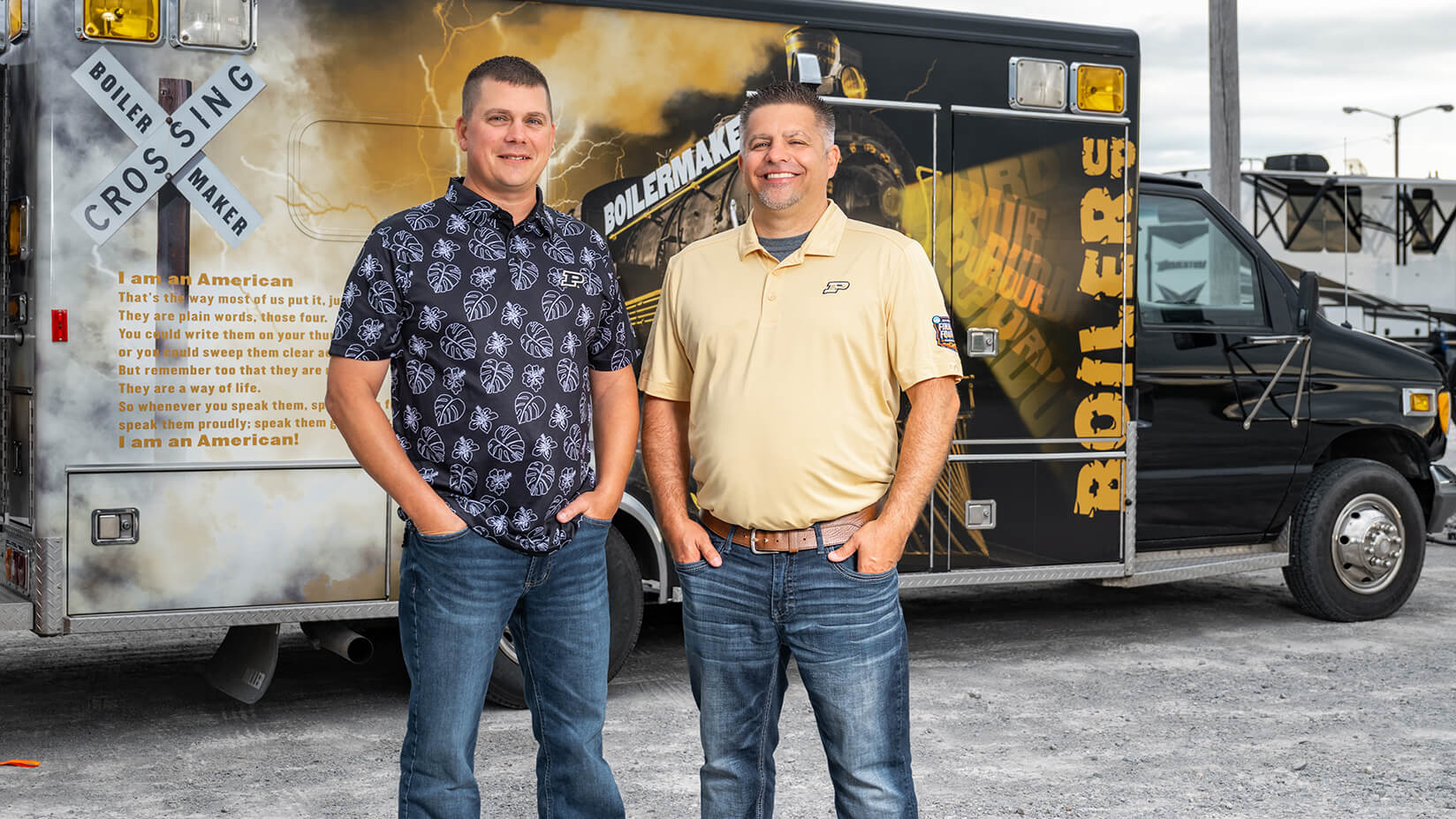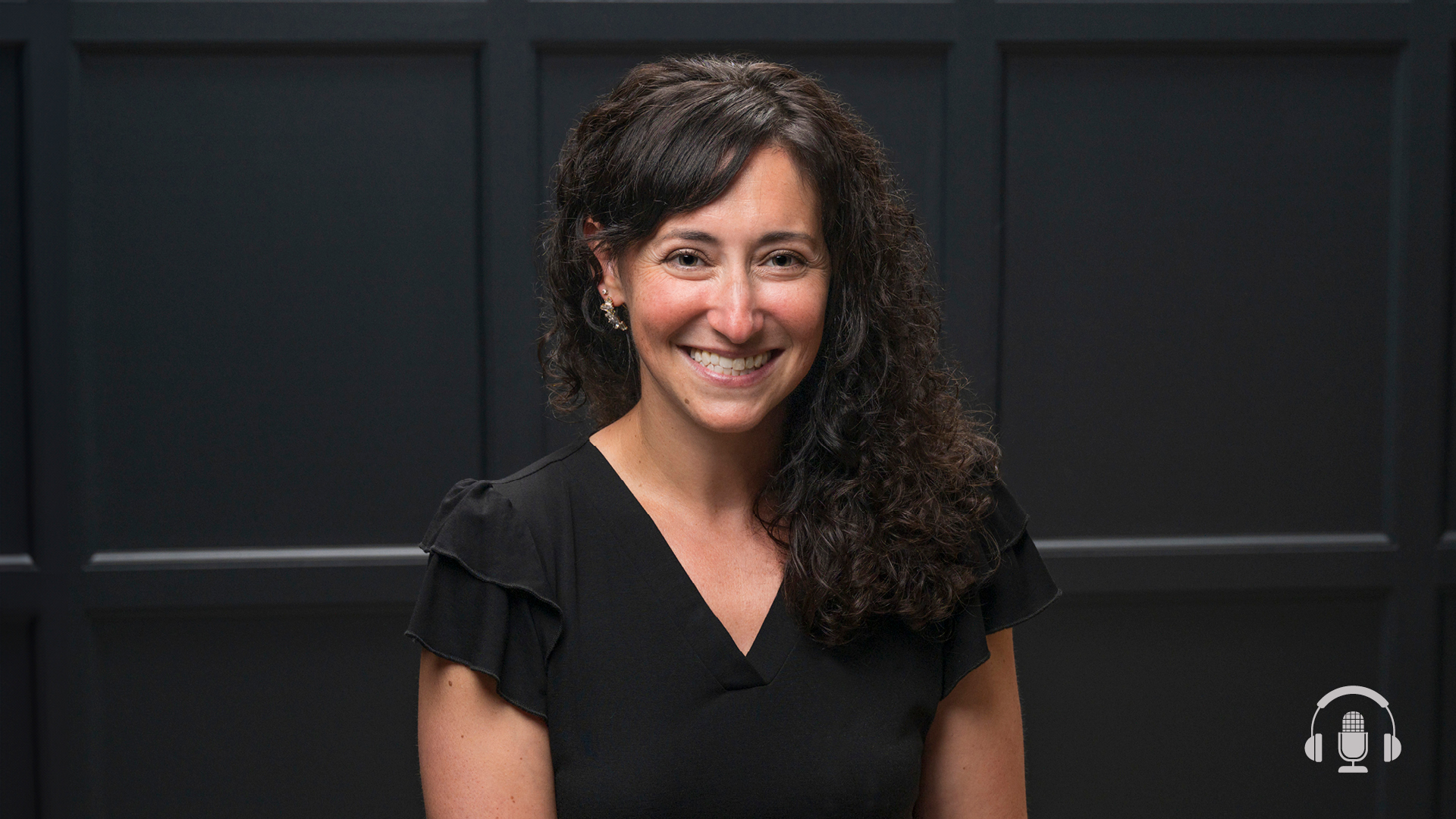An insider’s perspective on the new and improved IMS Museum
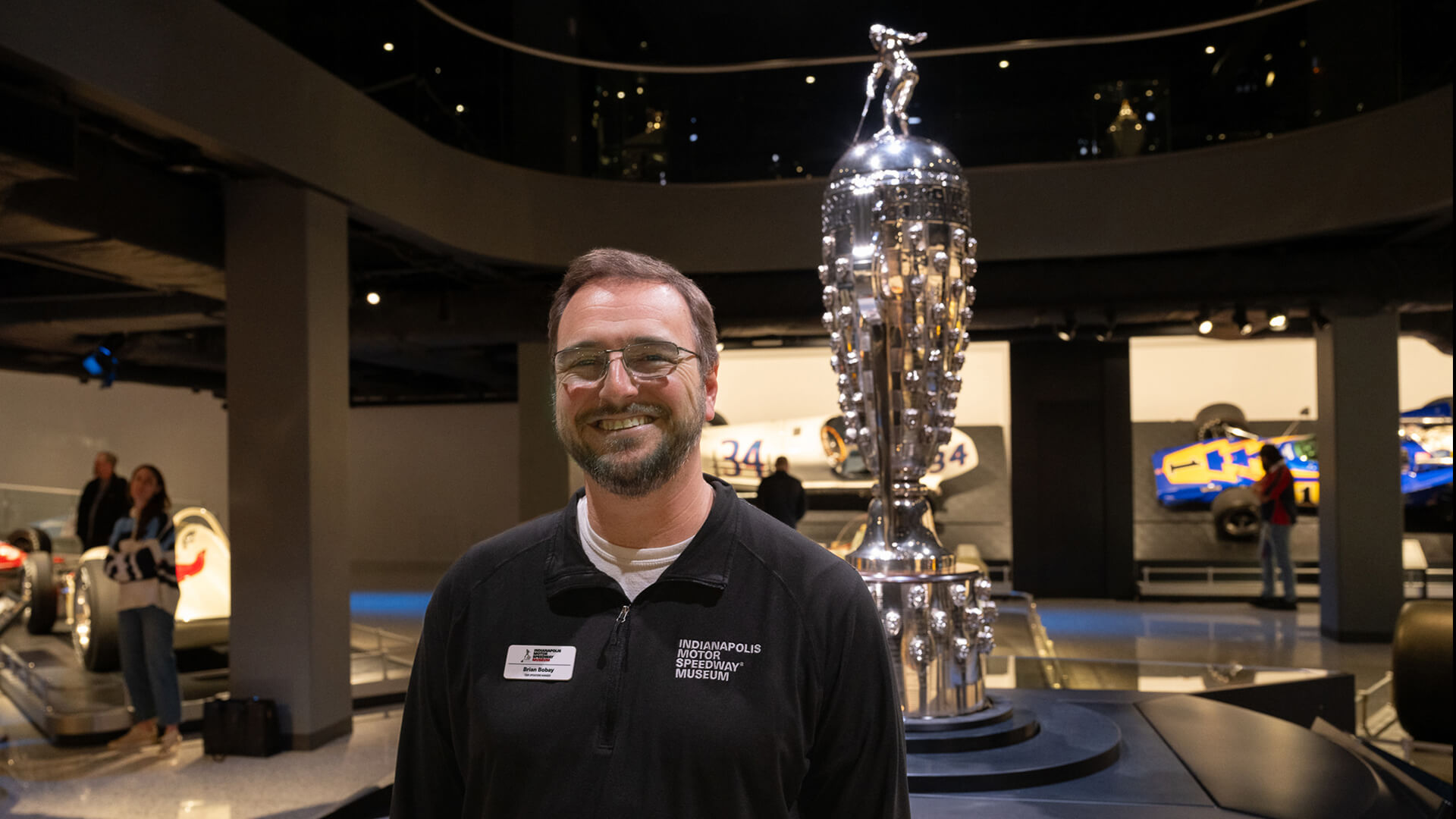
Brian Bobay, tour operations manager at the Indianapolis Motor Speedway Museum, and his colleagues — many of whom are also Purdue graduates — welcome visitors from across the globe to Indianapolis. (Purdue University photo/John Underwood)
The Indianapolis Motor Speedway Museum’s tour operations manager, a Purdue alum, shares what to expect after renovations
Visitors to the new and improved Indianapolis Motor Speedway Museum will receive a musical welcome from an ensemble that Boilermakers know well.
Just as the Purdue “All-American” Marching Band helps kick off the Indianapolis 500 each year by performing “Back Home Again in Indiana” moments before the race starts, the band will now help museum guests begin their visits in an immersive video sequence that places them at start of “The Greatest Spectacle in Racing.”
“The Purdue band features largely in that new video,” says Brian Bobay (BA social studies education ’07), the IMS Museum’s tour operations manager. “There are planes flying overhead. It has three IndyCars, patterned after the front row of that year at the start of the 500 — so every year, there are actually going to be different liveries on those cars as the front row is displayed. It has a gigantic screen overhead with various things and activities that start on race day. It’s basically like you’re experiencing the start of the Indy 500.”
And that’s just one of the many exciting changes that visitors will encounter when the museum reopens April 2. The museum closed for renovations in November 2023 as part of an $89 million campaign that significantly expanded its exhibition space and allowed for much-needed technological upgrades that create an exciting, interactive guest experience.
Now the museum is ready to once again greet visitors from all over the world, and Bobay is here to share what guests can expect from the revamped facility. In this abridged Q&A, the Purdue alum discusses must-see museum additions and how he has a perfect job for a history buff and racing enthusiast:
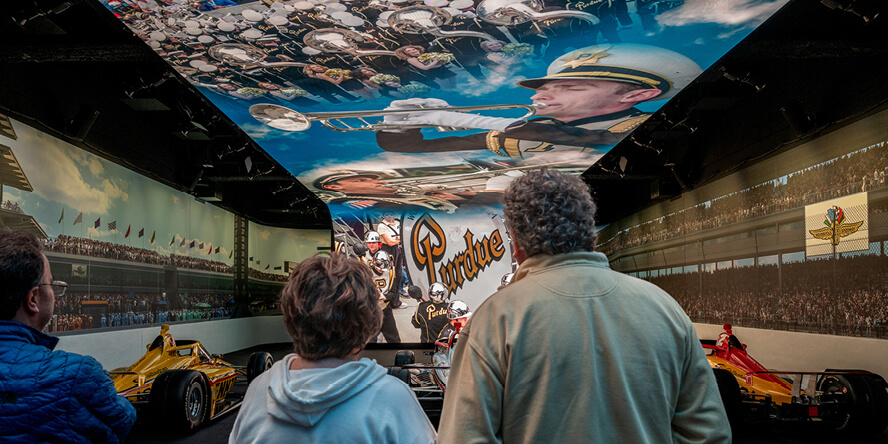
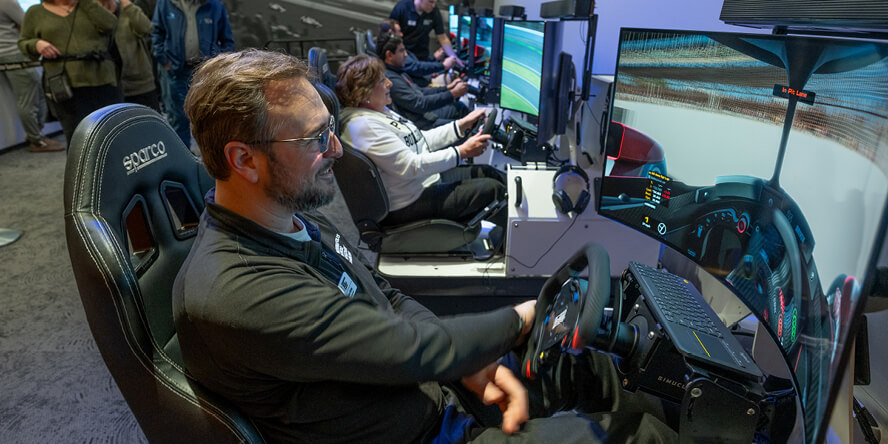
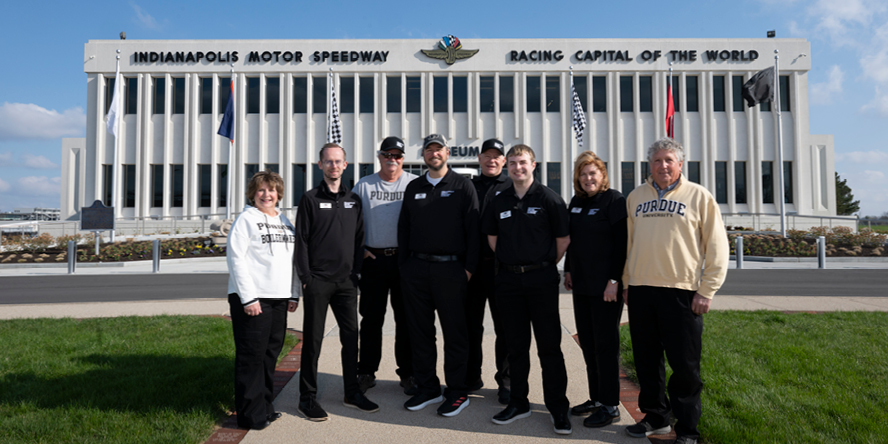
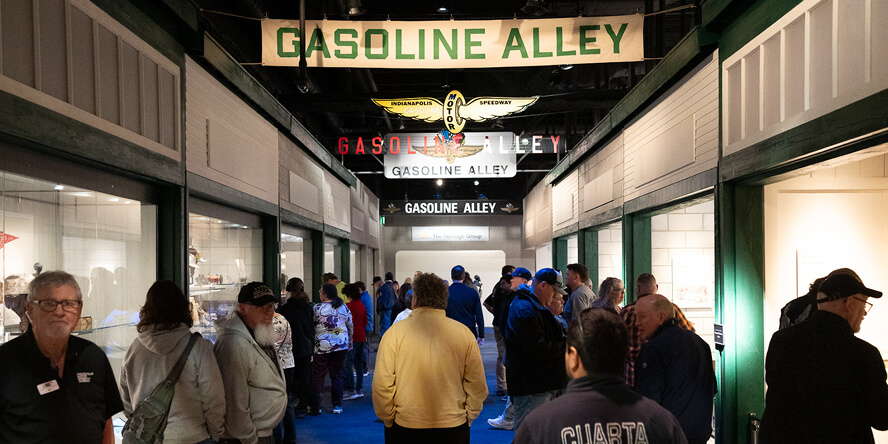
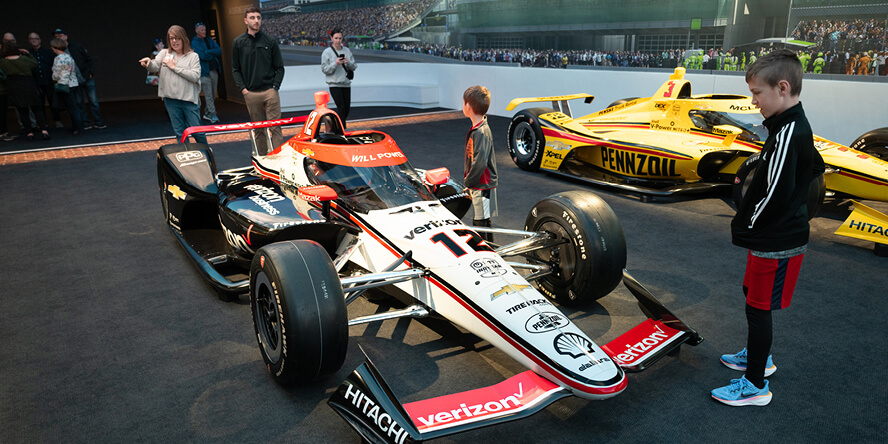
Q: Is it accurate to say the primary reason for the renovation was to bring the museum up to date?
A: Very accurate. Don’t get me wrong, I loved the museum as it was. As a kid, I can remember going in and seeing all the cars there. But part of the problem was what I remember as a kid is exactly how it was in 2023 when we closed. Lots of cool cars, but not a lot of interactive stuff. And for little kids, there was only so much you could do.
Whereas now in the new, updated museum, there’s a boatload of stuff for anybody of any age to do. A lot more interactive stuff. There’s a specific area for little children to do hands-on stuff like slot-car racing. There’s an interactive pit stop challenge. We’ve got racing simulators. A program with an interactive, almost simulation-based thing, where scenarios play out before you. You’re essentially the crew chief: You select a scenario, and it tells you whether your car decreased position or increased position, and then you move to the next scenario.
And we still have a bunch of cars displayed in an awesome way. Everything was kind of flat in the old museum, but some of the cars now are on a 9-degree banking, like the track. Others are at about a 45-degree banking, displayed so you can see more of the cars in different perspectives.
Q: Are there other ways the museum will be different now?
A: A whole bunch of ways. (IMS owner) Roger Penske has a special area in the back of the museum dedicated to his racing team and his successes at Indy, which have been numerous.
There’s now a mezzanine. It used to be just one floor: the cars on display, and that was it. The ceiling was so high, so they built in a mezzanine that you can walk up and see the cars below you. Below the mezzanine is where the Borg-Warner (Indy 500 winner’s trophy) is displayed. Also, the basement is being utilized in the museum’s primary display area, where it used to be this gigantic off-limits thing where all the cars were packed.
We’ll have about the same number of cars on display as before, just a little bit more spread out, and different angles, different perspectives that you didn’t get to see before. There are going to be, typically, two temporary exhibits. One right now celebrates the NASCAR Brickyard 400 with eight winning cars from that race. And then another temporary display is based on the four four-time winners of the Indianapolis 500.
A lot of the other things are dedicated to the winning cars of the 500, and those are going to be more permanent on display. As far as artifacts, you’ll see a whole bunch more than you did before. A lot of that is located on the mezzanine level.
Also, there’s a section dedicated to just about every major race that has been here. There’s a section dedicated to Formula One, some to sports cars, the Red Bull Air Race that was here for a couple years, to the USAC BC39 race that we have on the small dirt track out there. Before, the museum was geared almost 100% to the Indianapolis 500, but now we have space and the means to celebrate everything that was taking place here, not just the 500.
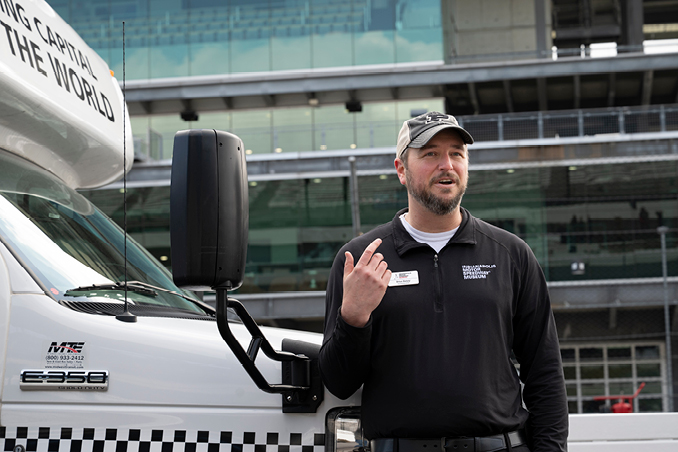
We get visitors, literally, from around the world. I’ve probably met someone from just about every single country in my 10 years here.
Brian Bobay (BA social studies education ’07)
Tour operations manager, Indianapolis Motor Speedway Museum
Q: If a museum guest were to ask you where they should go first now, where would you send them?
A: In the old museum, people came in and said, “Where should I go first?” And it was like, “Well, your choice.” You’d walk in and you had all the cars in front of you — winning cars over to the right, special exhibit off to the left, and so on and so forth.
Now it’s more of a guided path. You come in and the very first thing you see — and this is a neat thing right off the bat — is it shows the evolution of Gasoline Alley and the garage area. There are seven different garages with cars in them, and each one is period-patterned so you can see how the garages evolved as you’re walking through this exhibit. And as you look down, because the track surface went from something called taroid to brick to asphalt, the floor below you changes from era to era.
That’s what you’re immediately greeted with. Then you walk around the corner, and that’s where the Purdue band is featured in the video that simulates the start of the 500.
Q: What are some of your favorite items to show guests at the museum?
A: The Borg-Warner is always one of the more popular ones for people. And the Marmon Wasp, the winning car in 1911.
My favorite thing is to show the evolution of the cars. It isn’t one specific thing — it’s that all together you can see what came after this 1911 Indy car. It’s amazing to tell people that it didn’t have seat belts or anything, and it’s still going highway speeds at that time period. So just think of the bravery of those drivers.
I also like to tell people that the first rearview mirror is said to be on that 1911 car. The story behind that was, back in those days, cars always had a driver and a riding mechanic. Ray Harroun was the pilot of the Wasp in 1911, but it was a solo-seat car, so people complained that he didn’t have a co-pilot on board to look around and alert the driver if there’s a car around. To counteract that, Harroun installed what is thought to be the first rearview mirror up in the Marmon Wasp.
Now, if you remember, the track in 1911 was completely brick. If you’ve ever been on a car riding on bricks, the rearview mirror was probably pointless because the ride was so bumpy. But it was there, so that gave the other drivers some comfort.
Q: What would you say is the primary role of the IMS Museum?
A: We’re the custodians of the history of the place. Why is it important? Well, it’s a vital part of Indiana history. We get visitors, literally, from around the world. I’ve probably met someone from just about every single country in my 10 years here. They fly into Indianapolis, and even if they know nothing about our city, the one thing they know of is the Indianapolis 500, so they make their way here.
Also, we’re the point of contact for people for most of the year. There are four or five major racing events at IMS, but every other day of the year when people come to the track, it’s us that they’re dealing with. So even though we aren’t exactly associated with the Speedway per se, we’re the face of it at times. So it’s our job to make a good impression and to emphasize why this place is important.
Q: What does being the museum’s tour operations manager entail?
A: Essentially, I make sure the trains run on time. I’m in charge of basically about 40 to 50 tour guides and drivers. So I make sure we have the proper schedules for guides. If need be, I create tour routes and work closely with IMS.
A lot of people in Indiana don’t realize that the museum is actually separate from the Speedway. When people think of the museum, they think basically Roger Penske is running the museum. That’s not quite accurate. So a large part of my job is working directly with my IMS counterpart and seeing when we can have track access. If we can’t, what can we do beyond that? And then kind of taking that information and planning out the day from there.
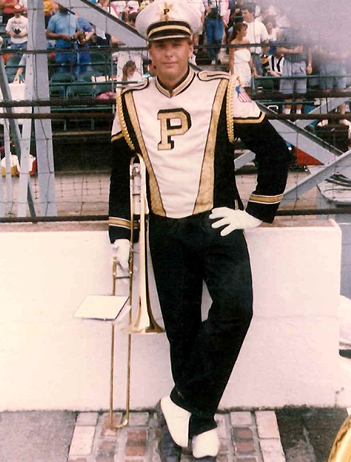
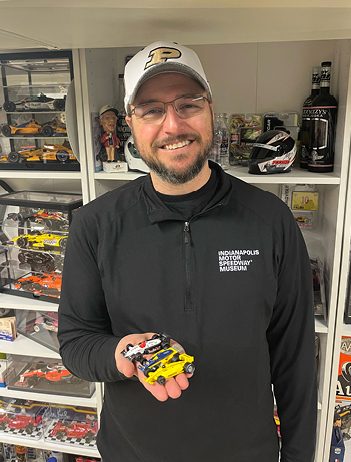
Q: How long have you been interested in racing?
A: Basically from birth. Obviously, being from (Fort Wayne) Indiana, the Indy 500 is on every single May. My dad started taking me to time trials when I was really young. My brother (Chris, BS civil engineering ’92), played trombone in the Purdue band from 1988 to ’92, so he was always there, because the Purdue band is always there. We were always looking on TV, saying, “Hey, where’s Chris?” And he always used to bring me back a little toy car, too. So all those factors played into my love of it.
And then as I got older, I got into history, which is why I went to Purdue. The history of the entire facility is fascinating, dating back to 1909 — and some of the characters behind IMS, the history dates back even way before that.
Q: Leading IMS tours seems like a perfect job for someone who’s interested in racing and history.
A: Oh yeah. People ask if I’m working my dream job, and I say, “Yeah. It’s still a job at times — all jobs are — but yeah, I’m definitely pretty lucky.” I originally thought I was going to be a high school teacher for the rest of my life. I did that for three years and decided it wasn’t exactly for me before I eventually came here. And now a decade later, here I am.
